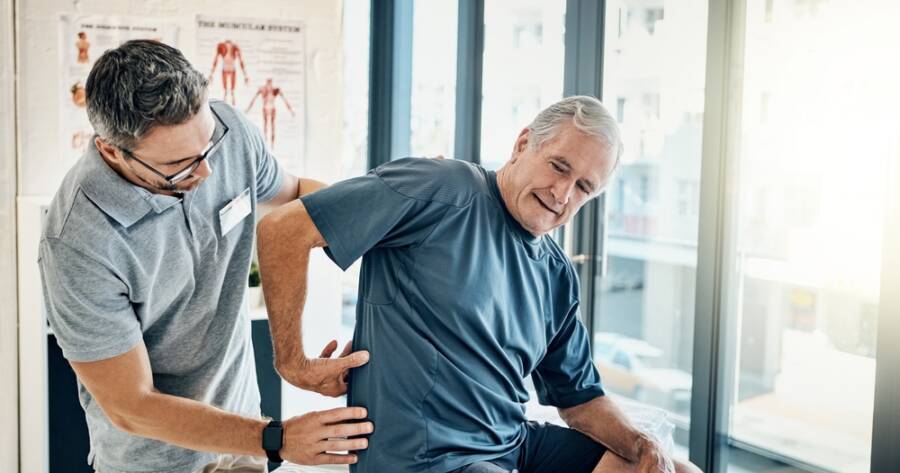Back pain is an incredibly common issue, affecting millions worldwide. If you’re eager to identify the specific cause of your back pain, you’re in luck—there are numerous potential triggers to consider. From muscle strain and poor posture to underlying conditions like herniated discs or arthritis, understanding the most common causes can help you take proactive steps. By exploring possible triggers, you’ll be better equipped to address what’s affecting your spine and find relief.
Why Your Back Hurts: Common Causes and Solutions
Back pain is a pervasive issue, often caused by a combination of lifestyle habits and underlying conditions. Here are the most common culprits contributing to this discomfort, along with some insights on how to address them:
1. Too Much Sitting
Modern work environments often require sitting for prolonged periods, which compresses the lower back (lumbar spine) and increases the risk of disc degeneration. To combat this, consider an ergonomic chair that supports a slightly reclined position, or consult an ergonomist to adjust your workstation.
2. A Sedentary Lifestyle
A lack of movement weakens and stiffens the muscles, leaving your back vulnerable to misalignment and injury. Simple habits like stretching, climbing stairs, or taking a brief walk every hour can significantly improve mobility. Remember: motion is lotion for your spine.
3. Tight Hamstrings
Extended sitting causes the hamstrings to shorten, pulling the pelvis out of alignment and altering the lumbar curve. Regular stretching can help maintain flexibility in this muscle group and prevent back strain.
4. Weak Core Muscles
Prolonged sitting weakens your core, which plays a crucial role in stabilizing the spine. Engage in exercises that strengthen the core—like planks or yoga—to restore balance and reduce the risk of back pain.
5. Excess Weight
Carrying extra weight, especially around the midsection, strains the lower back by exaggerating its natural curve. Maintaining a healthy weight not only supports spinal health but also reduces the risk of other health issues.
6. Tech Overuse
Looking down at phones or other devices strains the neck and upper back, which can throw the entire spine out of alignment. Hold devices at eye level to minimize strain and protect your posture.
7. Stress
Modern stressors activate the body’s fight-or-flight response, leading to tension in the lower back and hips. Incorporate relaxation techniques like deep breathing, meditation, or light stretching to release built-up tension.
8. Depression
Research suggests that depression can increase the likelihood of developing chronic neck and back pain. Seeking professional help to manage mental health can also alleviate related physical symptoms.
9. Herniated Disc
Disc herniation occurs when the soft center of a spinal disc pushes through its outer layer, pressing on nerves and causing pain. This condition requires professional treatment, such as physical therapy, to promote healing.
10. High Heels and Ill-Fitting Shoes
High heels shift the body’s alignment, leading to muscle strain in the back. Similarly, poorly fitting shoes can cause postural imbalances. Opt for supportive footwear to reduce strain on the spine.
11. Osteoarthritis
Osteoarthritis can affect the spine’s joints, leading to stiffness and pain. Managing symptoms often involves a combination of physical therapy, medication, and lifestyle adjustments to reduce stress on affected areas.
12. Spinal Stenosis
This condition, caused by a narrowing of the spinal canal, compresses the nerves and leads to pain or tingling. Treatment typically involves physical therapy or, in severe cases, surgical intervention.
13. Poor Sleep Positions
Sleeping on your stomach can strain the lower back, while an unsupportive mattress can exacerbate discomfort. Experts recommend sleeping on your back or side with a firm mattress that keeps the spine neutral.
14. Smoking
Smoking damages connective tissues and reduces blood flow, leading to faster degeneration of spinal discs. Quitting smoking improves overall health and reduces the risk of chronic back pain.
15. Red Flags
Certain symptoms—such as unexplained weight loss, fever, loss of bladder control, or numbness—can indicate serious underlying issues. If you experience these symptoms, seek medical attention promptly.
Learn More About Back Pain Causes
Back pain can arise from a wide range of causes, from poor posture and sedentary habits to more serious medical conditions. By understanding these common triggers and making targeted lifestyle adjustments, you can significantly reduce the strain on your spine and improve overall comfort. For persistent or severe pain, seeking professional advice is essential to rule out underlying health concerns and create an effective treatment plan. Your back deserves proper care—start by addressing these factors today!
